Crooked teeth not only ruin your smile but also negatively impact the condition of your jaw system. This issue can lead to diseases affecting not just the teeth and gums but also the gastrointestinal tract. Therefore, it is important to correct such defects. AESTHETE Dental Clinic offers assistance in straightening crooked teeth.
Causes of Crooked Teeth
Teeth can become crooked due to various reasons:
Trauma
Strong mechanical impact, such as a blow or the habit of chewing on hard objects, can cause a tooth to shift without breaking. The ligaments holding the tooth may become damaged or stretched, causing pain when biting. A specific case is an impacted dislocation, where the tooth is driven deep into the alveolar socket, sinking into the jawbone and appearing shorter than others.
Periodontal Disease
The periodontium consists of tissues surrounding the tooth root, ensuring its stable position. In periodontitis, the ligaments become inflamed and gradually deteriorate, and the jawbone atrophies, causing the tooth to become mobile and change its position.
Bruxism
Bruxism is a condition where the chewing muscles involuntarily contract, causing the jaws to clench, often during sleep. This leads to increased tooth wear, cracks, and chips. Due to excessive pressure, a tooth can become shorter or change position, reducing the bite height and causing pain in the chewing muscles and clicking in the temporomandibular joint.
Genetic Predisposition
Size, shape, color, and position of teeth can be hereditary. If parents, grandparents, or great-grandparents had crooked teeth, their children and grandchildren are likely to face the same issue.
Anomalies in Shape or Size
Pathologies such as macrognathia and micrognathia (enlarged or reduced tooth sizes) are common. These defects typically affect the incisors and canines, which are visible when smiling.
Wisdom Teeth Eruption
Wisdom teeth often lack space in the dental arch, especially in the lower jaw, which has reduced in size through evolution. They press against neighboring teeth, causing them to shift. This pressure often affects the canines and incisors, making them overlap.
Insufficient Hard Food Intake
The problem can arise if children are not given enough hard foods, like carrots or apples, during their developmental years. Without sufficient chewing load from foods like porridge, soups, and purees, the jaw system does not develop properly.
Early or Late Loss of Baby Teeth
Early loss of baby teeth causes neighboring teeth to tilt towards the gap, reducing space for permanent teeth to erupt correctly. Late loss leaves insufficient space for permanent teeth, forcing them to grow sideways.
Indirect Causes
Certain factors indirectly contribute to crooked teeth, such as:
- Nasal breathing disorders in childhood due to nasal polyps, allergic rhinitis;
- Musculoskeletal conditions like poor posture and joint diseases.
How to Straighten Crooked Teeth
The most common method for straightening teeth is orthodontic treatment. After an examination and diagnosis, the dentist will recommend either removable or fixed appliances to be worn for a certain period. The method and duration of treatment depend on:
- The severity of the problem;
- The cause of the defect;
- The patient's individual characteristics, such as age, lifestyle, and oral health.
Braces
Braces are fixed orthodontic appliances with an archwire attached to the tooth surfaces using brackets, applying pressure to shift the teeth into the desired position. The orthodontist determines the necessary pressure for bite correction and tooth alignment and periodically adjusts the tension. Brackets are made from metal, ceramic, or synthetic sapphire, often combined: ceramic or sapphire brackets in the front, metal on the molars. Advantages include high effectiveness for correcting even the most complex defects. The downside is the treatment duration, which can last several years. After removing the braces, plastic retainers must be worn to maintain the result.
Aligners
Aligners are removable orthodontic devices similar to braces but designed differently. These transparent elastic plastic trays apply pressure to the teeth and need to be replaced periodically. Aligners should be worn for at least 20 hours a day, only removing them for eating and brushing teeth. Advantages include their invisibility, ease of changing sets independently, and ease of cleaning teeth. The downside is they are not suitable for correcting severe misalignments.
Veneers
Veneers are thin overlays made from ceramic or composite material placed on the front tooth surfaces. They do not correct crookedness but merely hide it, making them suitable only for masking minor defects in one or a few teeth. Direct veneer placement is done in the patient's mouth using the same composite material as fillings. Indirect veneers are made from ceramic based on dental impressions and fitted to the front teeth. Typically, teeth need to be ground before veneer placement, a painful procedure that weakens their protection. However, AESTHETE Dental Clinic uses the Magicneers method, allowing veneer placement without grinding, avoiding pain and saving time. Veneers are ineffective for significant misalignments as they cannot be securely fixed.
Surgical Intervention
In severe cases, orthodontic treatment alone may not be effective. Orthognathic surgery may be required to:
- Correct bite problems;
- Restore normal facial proportions. The extent of surgery depends on the defect's severity, improving chewing function, speech clarity, and eliminating wheezing and shortness of breath. The rehabilitation period usually lasts two weeks, during which swelling and pain subside naturally. Advantages include correcting complex defects and restoring facial proportions. Disadvantages include contraindications, a high risk of complications, and a necessary recovery period.
Comprehensive Correction of Crooked Teeth
The orthodontist considers the patient's jaw system features when developing a treatment strategy. Understanding the cause of the crookedness and selecting the appropriate correction method is crucial. Examples of negative consequences from an unsuccessful treatment method:
- With braces or aligners: root exposure, overloading the temporomandibular joint, leading to pain, clicking, or cracking during chewing or wide mouth opening;
- With veneers: improper distribution of chewing load, leading to ceramic chipping. Therefore, a gnatologist examination is recommended before straightening teeth. This typically involves X-rays and computed tomography to analyze the jaw system and determine the best solution. Specialized software predicts the result, and a comprehensive treatment plan is developed, considering all important aspects.
Can You Do Nothing?

Some people believe that crooked teeth are merely an aesthetic issue and do not affect their interactions with others. However, this attitude is dangerous for oral and overall health. Without timely intervention, the situation worsens. Uneven chewing load causes some teeth to wear faster, leading to caries and pain. Crooked teeth are harder to clean, allowing food particles to remain trapped in unreachable areas, fostering bacteria that destroy enamel. Insufficient chewing negatively impacts the stomach, leading to gastrointestinal diseases. The risk of periodontitis increases, enamel chips at the neck area, creating wedge-shaped defects. Gums recede, exposing roots that react sharply to hot, cold, spicy, and salty stimuli, causing inflammation and tissue loss. Ligaments fail to hold the roots, leading to tooth mobility and loss. Speech disorders may occur, with lisping often caused by crooked teeth. Visiting a dentist immediately when encountering unpleasant symptoms is crucial. Preventive check-ups twice a year are even better, allowing the dentist to detect defects and diseases early.
AESTHETE Dental Clinic is located in Dubai (UAE), Bluewaters Island. We offer services to straighten crooked teeth for children and adults using modern methods that ensure excellent results. Clinic administrators will promptly answer questions, provide information on service prices, help choose a visit time, and schedule a consultation with the dentist.
FAQs
What are the dangers of crooked teeth?
Several serious problems include:
- Premature wear due to uneven chewing load;
- Difficulty cleaning, leading to bacteria accumulation causing caries and gum inflammation;
- Increased risk of periodontitis, causing tooth mobility and loss;
- Ineffective chewing, leading to gastrointestinal diseases.
These issues indicate that the defect needs correction to prevent diseases and improve quality of life.
How can you quickly straighten crooked teeth?
Treatment duration depends on the problem's severity and the patient's individual characteristics, typically lasting 6-18 months. After removing braces, retainers are needed to maintain the result. Following the dentist’s instructions strictly is the best way to speed up the process.
Referense
- Australian Society of Orthodontists. The Dangers of DIY Braces.
- Batista KB, Thiruvenkatachari B, Harrison JE et al. Orthodontic treatment for prominent upper front teeth (Class II malocclusion) in children and adolescents. Cochrane Database Syst Rev 2018;
- Ugolini A, Agostino P, Silvestrini-Biavati A et al. Orthodontic treatment for posterior crossbites. Cochrane Database Syst Rev 2021.















